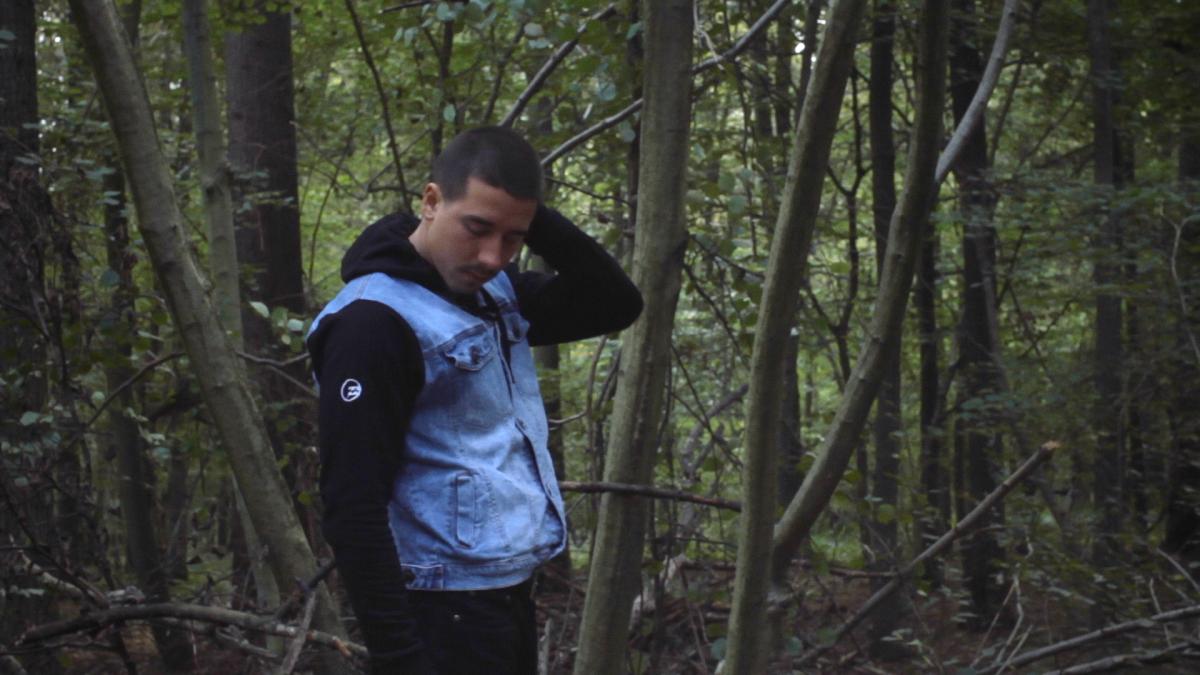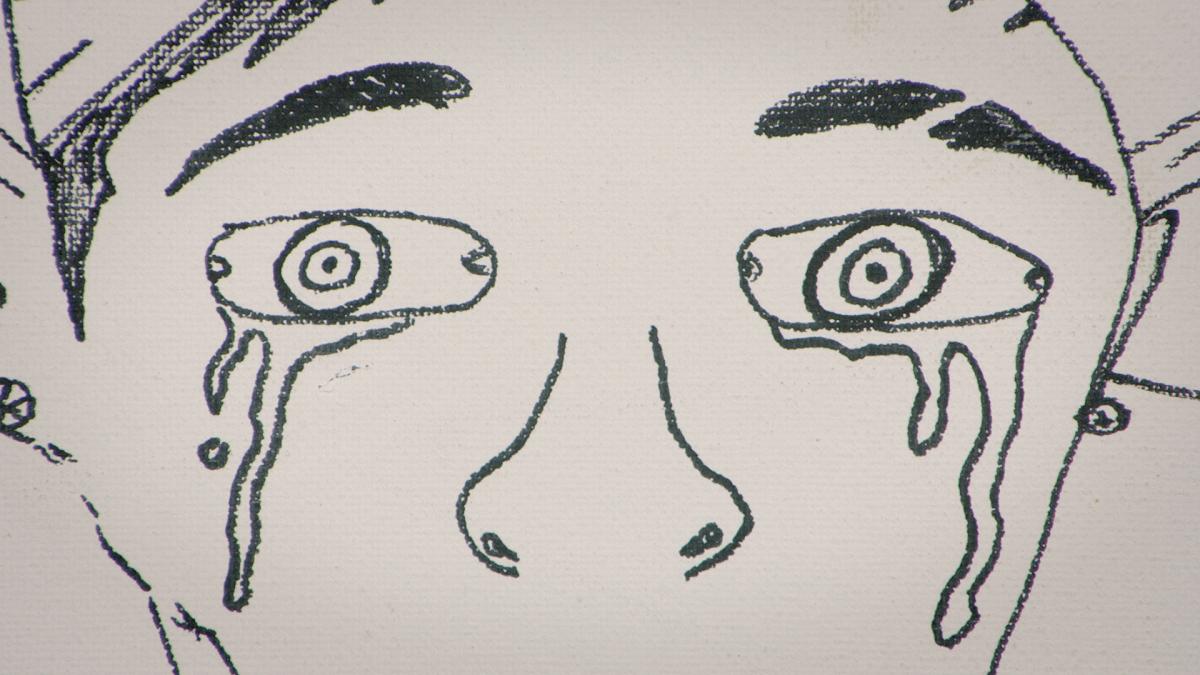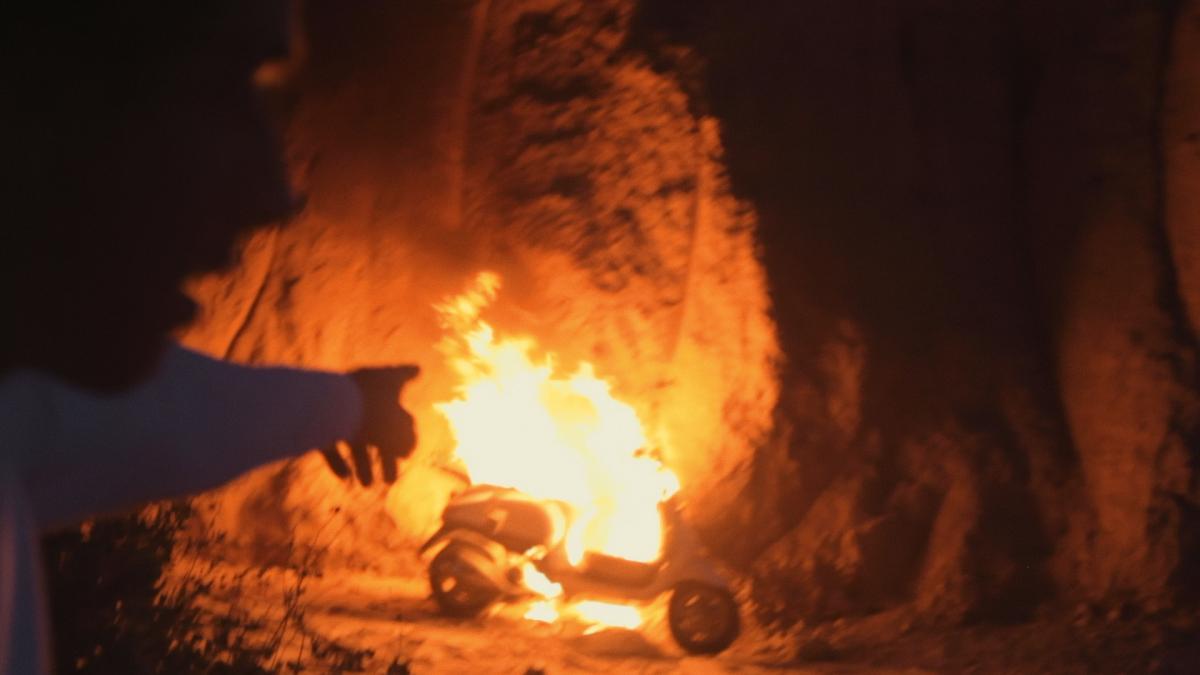Out of the Frame
On Soy libre (Laure Portier, 2021)

...man’s unceasing search for something he can never find. – John Ford
Soy libre is Laure Porter’s account of her younger brother’s search of more than a decade. Driven by inner turmoil and determined to leave his miserable past behind, Arnaud pursues a free life, a quest that takes him from France to Spain and eventually to South America. Arnaud had a turbulent youth, a mess of shelters, halfway houses and absent parents. Looking for a second chance, he is determined to start a new life in Spain. It is the start of a long ramble, which is narrated by the French filmmaker in a fragmentary way.
Soy libre tells a modest story. Arnaud clashes with the authorities, but his crimes are not such as to be particularly newsworthy. The film is neither a portrait of a spectacular life nor the opposite. Arnaud’s unremarkable existence is not glorified, as if his shaky social situation and personal relationship with the filmmaker would automatically provide him with an aura. Portier is a filmmaker who proceeds intelligently but never clinically, sensually but never sensationally, obsessively but never exploitatively. Soy libre does not rely on its (auto)biographical weight. Its value does not reside purely in the brother-sister relationship, as if this intimate bond would automatically open up a cinematic space. As a documentary maker, Portier does not pamper her brother. There is none of the forced gentleness with which some well-meaning image-makers shield themselves from the guilt of merely coming to measure the “damage”. Conversely, Arnaud does not ask for pity.
Filming for Portier is a constant negotiation, sometimes even a struggle. Arnaud is not easily “captured” by her camera. To make the film, she has to abandon some of her control over the film frame. When Arnaud leaves France to start a new life in Spain, his sister gives him a small camera. “Handing over” the camera is a common documentary strategy, used to give the documentary characters some room to move, a chance for those who are filmed to contribute in generating meaning. Such a promise often results in a rather administrative form of agency. A formal say in one’s own image should be tantamount to a partial transfer of the maker’s power. Such freedom is relative, as the direction of the frame ultimately remains in the hands of the filmmaker. The filmed/edited person always gets caught up in a certain point of view. Portier is very clear about her motivations. Soy libre is her film. Very early on in the film, she declares a ban: Arnaud must not look into the camera. This is not a merely anecdotal rule. In Soy libre, the control of the frame sets in motion a process of conflict and reconciliation between sister and brother. The participatory elements are not documentary tricks behind which Portier hides. They are the testimony of someone who, like his sister, is searching for a perspective on the world. More than a mere recording device, the camera becomes an instrument for orientation, his images showing something vulnerable, necessary and urgent. Arnaud films himself in all sorts of places, sometimes in precarious situations: a beach, a demonstration, sleeping on a park bench at night. His gaze withholds little from his sister; in his new life, there is not much hierarchy between the things he does. He makes his way, literally, through his new existence. His images are a sign of life, both for his sister and himself. In France, Arnaud leaves tags in the metro and in the streets. Tags are visual markings in the streets, a signature and evidence of the creator’s presence. “Look, I exist!” In the hands of Arnaud, the camera seems to have a similar function. “To not lose his head” he has to touch and change the world. He has to feel that he is there. He steals and destroys, living in a world without restrictions and documenting everything. Every image taken is a risk.

Soy libre is conscious of the limits of a documentary portrait. As a work of art that tries to trace the outline of an individual, a unified and complete image of Arnaud clearly remains wishful thinking. Like her brother, Portier continues to obsessively pursue the many appearances of Arnaud. In the process, Arnaud’s drawings reach out to a different representation of his inner world. In Portier’s attempts to do justice to his contradictions and complexity, the incapacity to portray Arnaud’s character in detail becomes clear.
“I want to know if this fucking life is worth living,” Portier says to her brother somewhere halfway in the film. In this scene, Arnaud is balancing on a fallen tree in the middle of a forest in Spain. The shot is staged, as appears from the frustration Arnaud expresses. Balancing, almost rushed, he must answer the question of whether he can and wants to live his new life to the full. “It’s like you’re taking away my freedom,” he replies. Any frame is alienating for Arnaud, including his sister’s cinematic frame. Making a film about someone’s search for freedom contains a paradox. Precisely by making a film, Portier deprives her character of some of that freedom.
The confrontation between sister and brother, between the filmmaker and her subject, also reveals the structure of the world. Portier leads a different life than Arnaud. She went to art school and ended up in a different social milieu. Arnaud reflects a different social trajectory. She has become a filmmaker, has been able to build a different life. He is lost, searching for a new place to stay. This tension is expressed literally several times. When Arnaud struggles with his broken-down scooter, he resents his sister for filming him. Conversely, Portier bites back when her brother strikes a pose in front of the camera, presenting himself as a certain “type” of juvenile delinquent. The question of a big sister’s responsibility for her little brother is reflected in the tension between the documentary filmmaker and her subject. The images in Soy libre are snapshots of an elusive existence. In this interplay of appearing and disappearing, a dance between brother and sister emerges, a constant moving in and out of the frame, as if Arnaud were playing cinematic hide-and-seek with his sister. More and more, his sister becomes an outsider in his world. “Am I ruining your life by filming you?” she asks at the end of the film. Arnaud literally sinks under the image. The camera disrupts his relation to his new surroundings. The film frame is no longer welcome.
Soy libre transcends the merely biographical. Arnaud’s concrete life acquires a shimmering abstraction by becoming part of a history. In this sense, Soy libre is a classic story, a contemporary life chronicle reminiscent of the work of John Ford, whose films show that human resistance is largely determined by the social environment. A guide in a turbulent world, Arnaud seeks an answer to the question of what makes life worth living. This becomes very explicit when Arnaud briefly returns to France to visit his frail grandmother. Her fragile, lonely face becomes a mirror for Arnaud’s own quest. To what extent can Arnaud find the freedom to build his own existence? Can he start again?
At the end of the film, Arnaud finally seems to find peace. In the chaos of this world, he finds something to believe in. He finds hope in an idea: he starts a family in Peru. All images fall silent, and Arnaud’s voice talks about his new life. The film frame seems to have definitively lost sight of him. He can no longer bear the gaze of his sister; his story can no longer be written by anyone else. For the first time, Arnaud focuses his camera on other things and other people. He films the reflection of the sun on the water’s surface. He also films his new love. For the first time, there is someone he wants to show with the camera. In the end, it is his own image, a drawing, that forms the frame he has devised for himself. Arnaud is elsewhere, out of the frame.

Images from Soy libre (Laure Portier, 2021)

